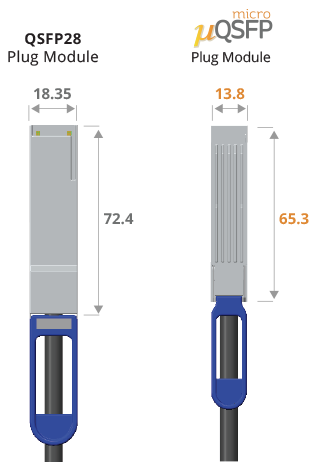Fiber Requirements Point to OM4 OM4 fiber offers a minimum effective modal bandwidth (EMB) of 4700 megahertz kilometer (MHz•km) at 850 nanometers (nm) compared with 2000 MHz•km for OM3. Both OM3 and OM4 fibers are 50 micron (µm) laser-optimized fibers with extended bandwidth and were designed to enhance the system cost benefits enabled by 850 nm VCSELs for laser-based 10, 40 and 100 Gb/s applications. They also are backwards compatible, with applications calling for overfilled launch (OFL) bandwidth of at least 500 MHz•km at 1300
nm (e.g., FDDI, IEEE 100BASE-FX, 1000BASE-LX, 10GBASE-LX4 and 10GBASE-LRM).
A number of standards define OM4 fiber for high-speed transmission. In North America, the Telecommunications Industry Association (TIA®) standard TIA- 492AAAD, approved in August 2009, contains the OM4 optical fiber performance specifications. The International Electrotechnical Commission (IEC) worked in parallel to adopt equivalent specifications documented in the international fiber standard IEC 60793-2-10 as optical fiber type A1a.3. In the latest TIA data center cabling standard, TIA-942-A, Telecommunications Infrastructure Standard for Data Centers, the only recognized multimode media types are OM3 and OM4 optical fiber, with OM3 optical fiber as a minimum grade and OM4 optical fiber recommended.
OM3 and OM4 optical fibers support Ethernet, Fibre Channel and InfiniBand applications, OM3 at 300 m (984 ft) and OM4 supporting extended reach upwards of 550 m (1804 ft) at 10 Gb/s for ultralong building backbones and medium length campus backbones. OM4 optical fiber is also ideally suited for high-bandwidth data center and high-performance computing applications, where optical loss budgets are tight at 10 Gb/s and even tighter at 40 Gb/s and 100 Gb/s. The high bandwidth provided by OM4 fiber when deployed at less than its rated distance offers extra headroom for channel insertion loss.
Ensuring Fiber Bandwidth There has been much discussion about the use of differential mode delay (DMD), calculated EMB (EMBc) and OFL bandwidth measurement methods. It is important to remember that these parameters exist for one reason—to determine whether a link will operate when inserted into a system.
The results of a recent study show that the DMD mask method provides the most rigorous screening of high performance multimode optical fiber. For this study, commercially available OM4 optical fibers and cables from various vendors were tested to determine their ability to support claims of extended link distances for 10 Gb/s transmission. The optical fibers were measured using the DMD mask technique and the EMBc method and then were subjected to bit error rate systems testing. The study indicated that the DMD mask method showed excellent correlation with system performance and reliably identified poor performing and even failing optical fibers when matched up with marginal transceivers. The EMBc technique does not always find such optical fibers. Some optical fibers that failed the DMD masks yet passed EMBc requirements showed significantly poorer performance and, in several cases, actually failed system testing.
It should also be noted that optical fibers with relatively low OFL bandwidth tended to perform poorly in systems testing when matched with a transceiver that launches higher power into outer modes. That is why the OM3 optical fiber standards require a minimum 1500 MHz•km OFL bandwidth at 850 nm and a minimum 3500 MHz•km OFL bandwidth for OM4 optical fiber. This was done to ensure performance and reliability.
Similarly, optical fibers with good control of inner modes (as evidenced by low DMD in the center region of the optical fiber) performed better with transceivers that launched more power into this region. The EMBc method does not probe the center portion of an optical fiber, thus allowing marginal optical fibers to be deployed.
The standards allow either the DMD mask method or the EMBc method for verifying OM3 and OM4 performance. However, testing has established a strong argument for the more stringent DMD mask method. To provide the utmost in performance and reliability, users are encouraged to specify OM3/OM4 optical fiber that meets and exceeds the requirements of both the EMBc method and the more discriminating DMD mask method.
